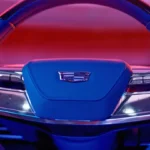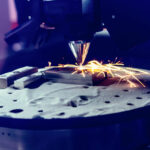With the rise of 3D printing in all sorts of automotive manufacturing, the technology is continuously offering new possibilities, from tail lights to breaks, and now wheels. Renowned sports and luxury vehicle wheel provider HRE is now using 3D printing to develop titanium components for the McLaren P1. Their latest design is lighter than the stock option and offers far lower material waste than traditional manufacturing methods.
Back in November 2018, HRE Wheels and GE Additive announced a partnership agreement and unveiled the first titanium wheel created using EBM (electron beam melting) technology. This led to the creation of HRE3D+ wheels, a new prototype showcasing how advanced materials like titanium can be harnessed to create complex designs. This new type of wheel has become a futuristic design for the McLaren P1, weighing in at just 20 pounds.
Supercars like the P1 benefit from all the weight reduction that parts like this can offer, improving every metric of performance. The wheels also makes the production far more efficient for manufacturers. According to the company, with a traditional aluminum Monoblok wheel process, 80% of material is removed from a 100-pound forged block of aluminum to create the final product. With additive manufacturing, only 5% of the material is removed and recycled. Titanium also has a much higher specific strength than aluminum and is corrosion resistant. This allows it to be extremely lightweight while being presentable in its raw finish state.
This is an incredibly exciting and important project for us as we get a glimpse into what the future of wheel design holds. HRE President Alan Peltier
Developing 3D Printed Wheels
“Working with GE Additive’s AddWorks team gave us access to the latest additive technology and an amazing team of engineers, allowing us to push the boundaries of wheel design beyond anything possible with current methods. To HRE, this partnership with GE Additive moves us into the future,” Alan Peltier states.
The project was an intensive design collaboration between the Vista, California team at HRE and the GE AddWorks team out of Ohio. Using various designs from two existing models of HRE wheels, the companies went to work on their latest wheel. The wheels were printed in five separate sections on two Arcam EBM machines, the Q20 and a Q10. Later, they assembled these parts using a custom center section and bolted it to a carbon fiber rim using titanium fasteners.
The project is a massive step forward for new 3D printing applications in the automotive field. Although the wheels are definitely not for the average consumer-grade vehicle, they offer a lot of design possibilities that could carry over to other racecar designs and even F1, where weight and resistance are crucial.
Featured image courtesy of HRE & Mclaren.













